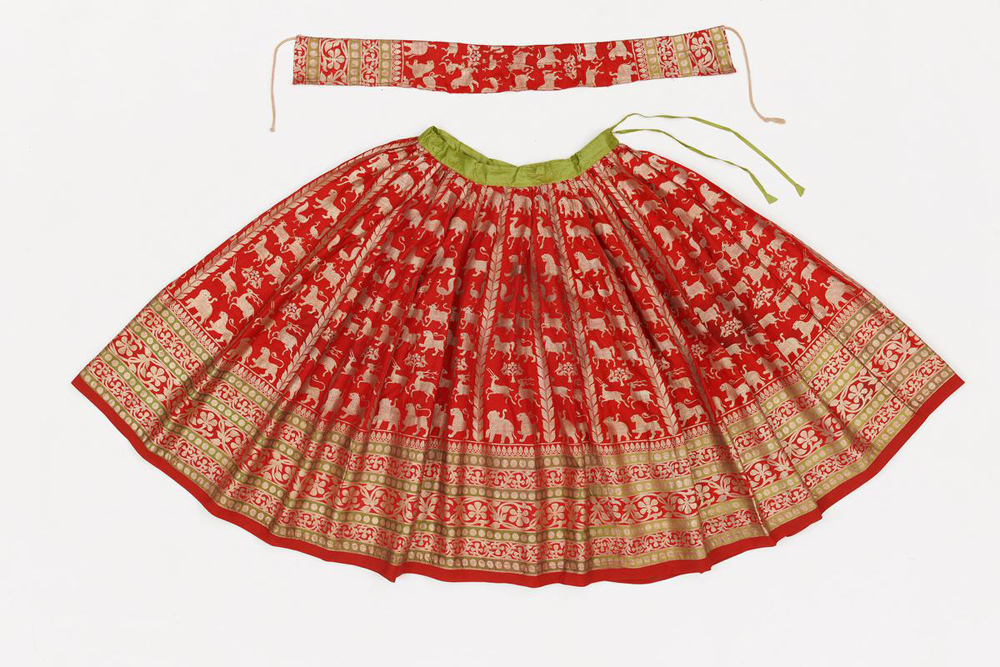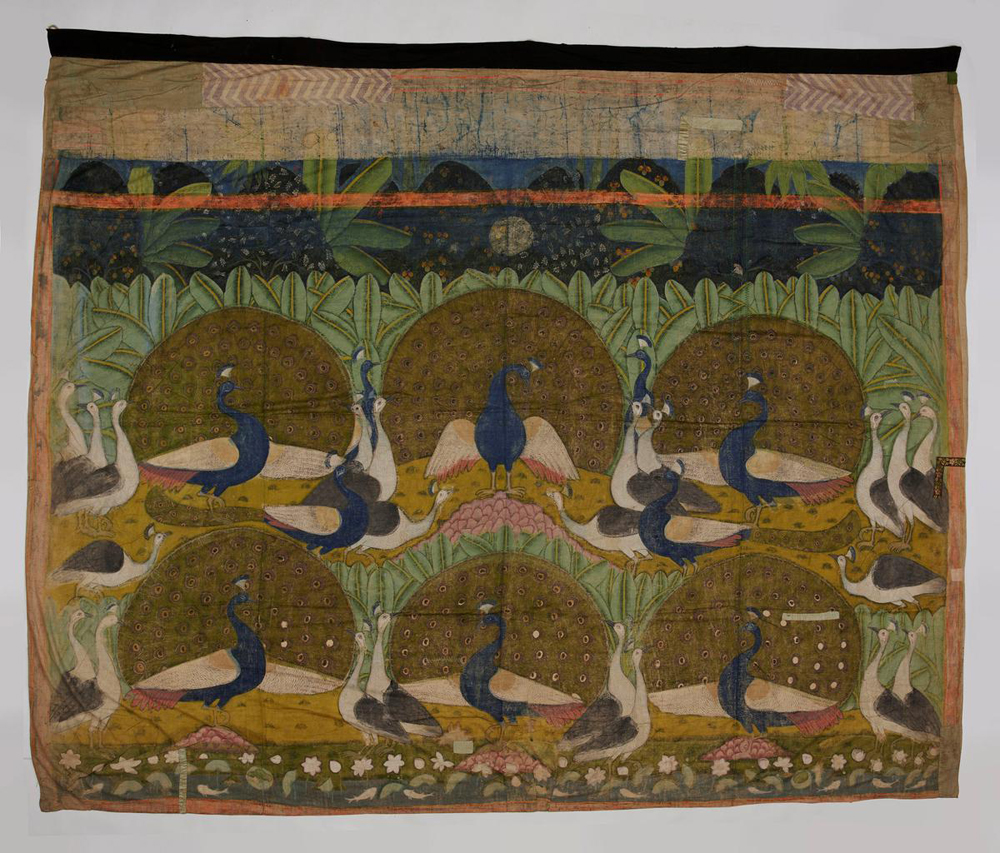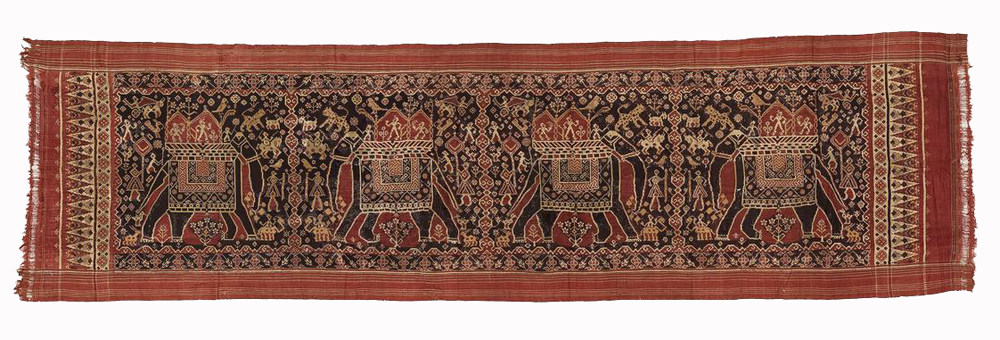Category: INDIAN HERITAGE TEXTILE
Country: India
By Gowri S | JUNE 24, 2022 22:27 IST | UPDATED: JUNE 25, 2022 17:57 IS
Bengaluru-based Museum of Art & Photography collaborates with Microsoft to launch an AI-powered, interactive digital platform that guides the viewer through textile history across regions and eras
A Persian kalamkari wall hanging that dates back to the late 17th Century or early 18th Century is my starting point. A closer look at the fabric reveals a royal personage seated in a pavilion surrounded by crocodiles and an elephant-like figure beside which stand seven disciples in courtly attire. The scene is perhaps set in a garden. Boasting the kalamkari technique of hand painting and block printing that involves resist dyeing, the fabric is a welcome mix of red, maroon and indigo, outlined with black.
A single click away, connected to the former by an artery, is a carpet adorned with flower motifs that originated between 1750 and 1850, possibly in Armenia or Dagestan. Aided by more informative arteries, a rich textile history reveals itself on screen. Thanks to AI (Artificial Intelligence) and machine learning powered by Microsoft, Interwoven, a vast collection of South Asian textiles that the Museum of Art & Photography (MAP) prides itself on, has just become globally accessible.

Shikargarh brocade skirt; Unknown; 20th Century | Photo Credit: Special arrangement
The platform, which is fairly easy to navigate, has filters to explore connectors and differentiators between each piece of textile: patterns and motifs, geographies and cultures, date and eras, and the like. One also gets to devise a custom journey on selecting a single piece of art.
The still-growing collection of MAP has been in the works for one-and-a-half years. “The reason we chose textiles is because it uncovers all these connections between regions and cultures. Take South Asian textiles for instance: our craftsmen have mastered some of the most complex weaving techniques and produced exquisite textiles that travelled over the seas because of the strong trade connections that existed. We have been in the world market for centuries,” says Kamini Sawhney, director, MAP. Though Interwoven draws on the strong textile base in the museum’s collection, it also includes artefacts from institutes across the world, such as the V&A (London), MET (New York), Rietberg (Zürich), and the Royal Ontario Museum (Canada).
Technology for good
AI as a technology is clearly being adopted across multiple domains and sectors, Rohini Srivathsa, national technology officer at Microsoft India, quips. AI for Good is a Microsoft initiative that, over the next five years, will show significant commitment to use the technology to address some of the challenges as well as opportunities in the world. “AI for Cultural Heritage is one of five such programmes. And this collaboration is a marriage made in heaven,” she adds.

Morakuti pichwai; Unknown; early 20th Century | Photo Credit: Special arrangement
“The thinking behind the experience when you go on the site, in terms of the journeys that people go through, comes from the MAP academy. Behind the scenes, there is quite a bit of technology that plays in — AI text analytics, cognitive search, custom vision, computer vision... There is a tremendous amount of tagging of data and developing of training models that happens in the background. But once you create that, the machine learning and AI engines are able to recognise some interesting connections between MAP and the partner museums,” says Rohini. These are connections that the human eye will perhaps fail to see. “It opens up abilities to create a very personalised experience,” she adds. When the right tools are placed within the hands of domain specialists and experts, the technology takes on the role of a multiplier.

Patola Ceremonial Textile; Unknown; early 19th Century | Photo Credit: Special arrangement
“There are two options for the viewer: the curated journey and the customised journey. The former is created by the educational research team at the MAP academy. For this, AI throws up connections between different global artefacts, and then the team researches and expands on them to create a journey,” says Kamini. For example, in Leisure and Play, you would see motifs of hunting, reading or play. A colourful dhurrie from the 1940s depicts a hunting scene, leading you to an artefact from the Smithsonian Institute that shows the eagle dance from the 1830s.” Each time, the customised journey would be different (for the same viewer). Thus, an artist’s view would be different to that of a conservationist or a collector.
Access is key
Does the critique that art viewing is not at its optimum level when done on the digital space, pose a challenge to this initiative? Kamini believes that it depends on an individual’s taste. “But we always look at this debate as an ‘either/or’. I don’t think one substitutes the other. The key is to look at the advantages of the digital space and use it best. You cannot replicate the experience of a physical space, but you can create a completely new one. We look at the physical and digital space as two parts of a pole.”
While we are realising how important physical interactions are, it is pertinent to look at how the two mediums build on each other, adds Rohini. “If I am sitting in a tier 2 or tier 3 [city] and am able to experience this virtually, there is a higher propensity that I will travel to view it physically.” She is certain that the introduction of spaces like the Metaverse and tools like Augmented Reality is going to change the way art is consumed.
Interwoven hopes to be one such segue between the two. “An understanding of the past leads you to the future,” says Kamini, adding, “while initiating global cultural exchanges. Art just helps us make sense of the world we live in.”
Courtesy: https://www.thehindu.com/entertainment/art/bengalurus-map-microsoft-launch-ai-powered-platform-for-textile-history/article65556855.ece
Copyrights © 2026 GLOBAL TEXTILE SOURCE. All rights reserved.